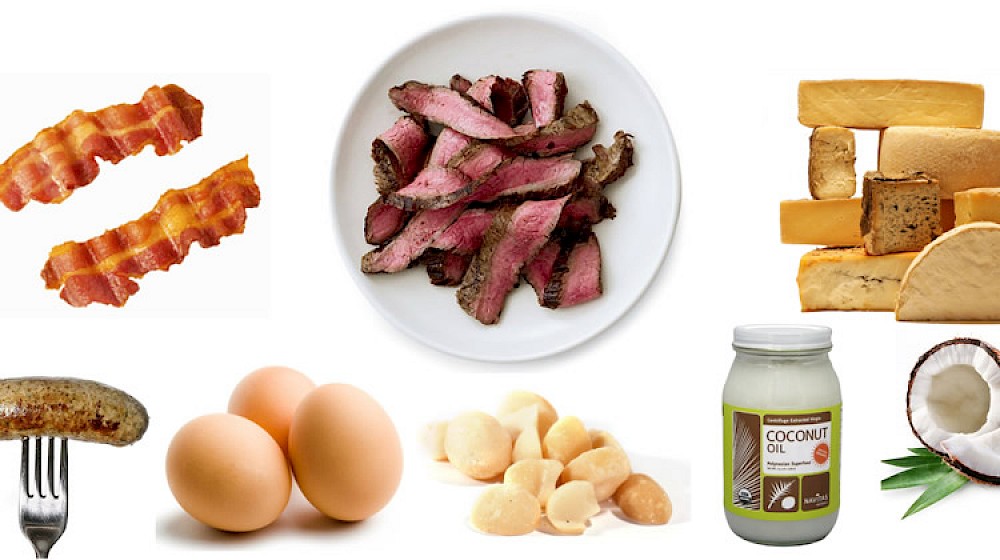
When we talk to people about the ketogenic diet and lifestyle, one of the questions most frequently asked is, "Is that like paleo?" A typical response is something along the lines of, "It's like a modified paleo," and many will leave it there. However, we think it's important for you to be able to identify the differences between the two, not because one is inherently better than the other, but because everyone should be aware of their options. While there are many similarities between paleo and keto, there are at least three major differences.
Paleo isn't necessarily low carb
- In theory, the idea behind paleo is to tap into the ancient ways of eating, the ways that our ancestors ate. Thousands of years ago, there were no processed or manufactured foods and sugar wasn't readily or widely accessible, thus humans didn't eat those things. People also didn't have the ability to go buy their food; they had to find it for themselves, hence the hunting and gathering. For pure energy, nothing beats eating fat because it has more energy per gram than carbs or protein, which means finding and eating fatty animals was integral to the hunting part of things. Therefore, an ancestral protocol should tend to focus on getting fat and protein as a primary source of energy, and upon that we agree. One major area where paleo and keto diverge, however, is on the subject of starches. A paleo protocol usually doesn't advocate avoiding potatoes, sweet potatoes, carrots, and other starchy tubers and root vegetables. These particular vegetables fit completely within the paleo framework, but because of their glucose- and insulin-spiking properties they should be avoided in a keto diet. The nutshell is this: while paleo's focus is on tapping into the ancient ways as a whole, the primary focus of a ketogenic protocol is on keeping insulin levels very low and ketone levels really high. Consequently, starchy foods like potatoes may be in on paleo, but tend to be out on keto.
Paleo isn't necessarily high fat
- Wait, didn't you just read that paleo is high fat? Well, yes. Let's explain. Paleo, in its purest form, should tend to be high-fat. However, as the ancestral health community continues to grow and change, many variations on the protocol have arisen, and with them the list of acceptable foods changes. A common issue that crops up in every popular dietary movement is that nobody owns it. While it's nice that there isn't a magisterium which forbids tailoring a food lifestyle to one's needs, the downside is that anyone can commandeer the brand and make claims that might contradict or live in tension with foundational ideas. We find this fairly frequently in the ancestral health community (as well as in the ketogenic movement). Some paleo advocates don't like the idea of eating high-fat foods. Some are vegetarians or vegans, and so on. Therefore, when someone says they eat a paleo or ancestral diet it doesn't necessarily mean that they are "orthodox" paleo and also eat high fat. Some paleo eaters may, in fact, eat a fairly low-fat, high-carbohydrate diet.
Dairy
- Many paleo advocates tend to frown upon dairy consumption, and for fairly well-founded reasons. The thinking is that our ancestors didn't have access to the kinds of dairy we do today, and certainly not on the mass-produced scale to which we moderns are accustomed, therefore it's reasonable to conclude that ancient peoples didn't consume dairy in abundance. Cow's milk was meant for calves, and human milk was meant for our babies. Historically speaking, humans only recently developed the ability to digest lactose and only in some populations (usually those that raised livestock), and so many in the ancestral health community will (rightly) expound upon the dietary problems associated with dairy consumption. On the other hand, those that follow the "primal" movement do not shun dairy and may eat it at will. Ketogenic protocols do not take a hardline against dairy, although we do recognize that it can be problematic for many people. For a large part of the ketogenic movement, dairy is a great source of natural fats and energy but, because many people have allergies and sensitivities, if you don't eat dairy, that's okay, too. You can be keto with or without dairy.
Even though the paleo and ketogenic protocols diverge in some fairly substantial ways, it must be noted that the paleo community has been an absolute powerhouse of a movement, bringing massive amounts of attention and awareness to ancestral eating. For that, we applaud them! While we have some areas in which our advocacy diverges, paleo and ketogenic protocols do have one major similarity: We each advocate for eating whole, nutrient-dense foods in their most natural forms. Whichever eating lifestyle you choose, keeping your food very clean and natural is the first step towards health and food freedom.
